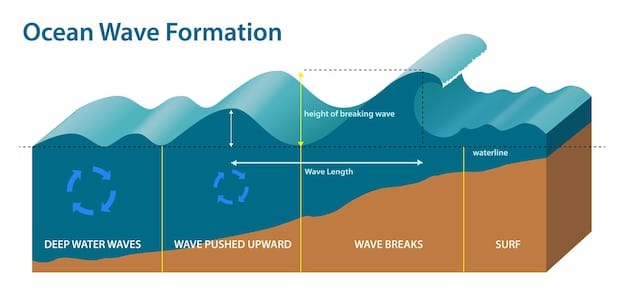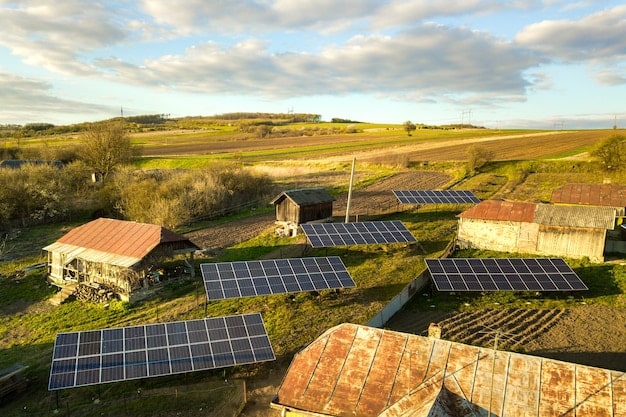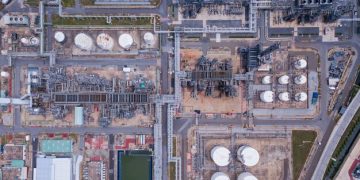IPCC Report: Urgent Climate Action Needed in the US

The latest IPCC report underscores the urgent need for accelerated climate action in the US, highlighting the escalating impacts of climate change and emphasizing the importance of immediate and substantial reductions in greenhouse gas emissions to mitigate further catastrophic consequences.
The latest IPCC report says about the urgency of climate action in the US that immediate and drastic measures are crucial to avoid the most catastrophic consequences of climate change. The report emphasizes the increasing severity of climate impacts and the shrinking window of opportunity to limit global warming.
Understanding the IPCC and Its Reports
The Intergovernmental Panel on Climate Change (IPCC) is the leading international body for assessing climate change. Established in 1988, it provides policymakers with regular assessments of the scientific basis of climate change, its impacts and future risks, and options for adaptation and mitigation.
The Role of the IPCC
The IPCC does not conduct its own research but synthesizes and evaluates the vast body of scientific literature produced worldwide. Its reports are the result of rigorous analysis by leading climate scientists and are considered the most comprehensive and authoritative sources of information on climate change.
Key Aspects of IPCC Reports
- Assessment Reports: These comprehensive reports are released every 5-7 years and cover the physical science basis, impacts, adaptation, and vulnerability, as well as mitigation of climate change.
- Special Reports: These focus on specific issues or regions, providing in-depth analysis of particular aspects of climate change.
- Methodology Reports: These provide guidelines for countries to develop greenhouse gas inventories.
Understanding the IPCC and its reports is crucial for grasping the scope and urgency of climate action, particularly in the US, which is a major contributor to global greenhouse gas emissions.
Key Findings of the Latest IPCC Report for the US
The latest IPCC report paints a concerning picture of the impacts of climate change on the United States, highlighting key areas of vulnerability and emphasizing the need for immediate action.
Increased Temperatures and Extreme Weather
The report indicates that the US is already experiencing significant warming, with average temperatures increasing across the country. This warming trend is driving more frequent and intense heatwaves, droughts, and wildfires, particularly in the western states.
Sea Level Rise and Coastal Impacts
Coastal regions of the US are facing increasing threats from sea level rise, driven by thermal expansion of the ocean and melting glaciers and ice sheets. This is leading to increased coastal flooding, erosion, and saltwater intrusion, threatening coastal communities and ecosystems.

Impacts on Agriculture and Ecosystems
The report also highlights the impacts of climate change on agriculture and ecosystems in the US. Changes in temperature and precipitation patterns are affecting crop yields, water availability, and the distribution of plant and animal species.
These findings underscore the urgent need for comprehensive climate action in the US to mitigate the worst impacts of climate change and protect vulnerable communities and ecosystems.
The Urgency of Climate Action: A Shrinking Window
One of the most critical messages of the latest IPCC report is the urgency of climate action. The report emphasizes that the window of opportunity to limit global warming to 1.5°C (2.7°F) above pre-industrial levels is rapidly closing.
The 1.5°C Threshold
Limiting warming to 1.5°C is crucial to avoid the most catastrophic consequences of climate change, such as widespread species extinction, sea level rise that inundates coastal communities, and extreme weather events that displace millions of people.
The Need for Deep Emission Cuts
- Rapid Decarbonization: The report calls for rapid and deep reductions in greenhouse gas emissions across all sectors of the economy.
- Transition to Renewables: This includes transitioning to renewable energy sources, such as solar, wind, and hydropower, and phasing out fossil fuels.
- Energy Efficiency: Improving energy efficiency in buildings, transportation, and industry is also essential.
Consequences of Inaction
The consequences of inaction are dire. If emissions continue to rise at the current rate, the world is on track for warming of 3°C or more by the end of the century. This would lead to irreversible changes in the climate system, with devastating impacts on human societies and natural ecosystems.
Therefore, the IPCC report serves as a stark warning that immediate and ambitious climate action is essential to safeguard the future of the planet.
What the US Can Do: Mitigation Strategies
The IPCC report outlines a range of mitigation strategies that the US can implement to reduce its greenhouse gas emissions and contribute to global efforts to combat climate change.
Investing in Renewable Energy
The US has vast potential for renewable energy development, including solar, wind, geothermal, and hydropower. Investing in these sources can significantly reduce the country’s reliance on fossil fuels and lower its carbon footprint.
Improving Energy Efficiency
Enhancing energy efficiency in buildings, transportation, and industry can also lead to substantial emissions reductions. This includes improving building insulation, developing more fuel-efficient vehicles, and adopting cleaner industrial processes.

Policy and Regulatory Measures
- Carbon Pricing: Implementing carbon pricing mechanisms, such as carbon taxes or cap-and-trade systems, can incentivize emissions reductions.
- Regulations: Enacting regulations to limit emissions from power plants, vehicles, and other sources can also drive down emissions.
- Standards: Setting energy efficiency standards for appliances, buildings, and vehicles can help reduce energy consumption.
By implementing these mitigation strategies, the US can demonstrate leadership in the fight against climate change and help to create a more sustainable future.
Adaptation Measures for the US
In addition to mitigation, adaptation measures are also essential to cope with the unavoidable impacts of climate change. The IPCC report highlights the need for the US to prepare for and adapt to the changing climate.
Enhancing Infrastructure Resilience
Investing in infrastructure that is resilient to climate change impacts, such as sea level rise, flooding, and extreme weather events, is crucial. This includes building seawalls, improving drainage systems, and strengthening bridges and roads.
Protecting Ecosystems
Conserving and restoring natural ecosystems can also provide valuable adaptation benefits. For example, coastal wetlands can buffer against storm surges, and forests can help regulate water supplies and reduce the risk of wildfires.
Community-Based Adaptation
Engaging local communities in adaptation planning and implementation is essential to ensure that measures are tailored to their specific needs and vulnerabilities. This includes providing resources for communities to develop climate resilience plans and implement adaptation projects.
By implementing these adaptation measures, the US can reduce its vulnerability to climate change impacts and protect its communities and ecosystems.
The Economic Benefits of Climate Action
While some argue that climate action is too costly, the IPCC report and numerous other studies have shown that the economic benefits of climate action far outweigh the costs of inaction.
Reduced Healthcare Costs
Climate change is already having significant impacts on human health, including increased rates of heat-related illnesses, respiratory diseases, and vector-borne diseases. By reducing emissions, the US can lower healthcare costs and improve public health.
Job Creation
Investing in renewable energy, energy efficiency, and sustainable transportation can create millions of new jobs in the US. These jobs will be in high-growth sectors and can help to stimulate economic growth.
Increased Competitiveness
Countries that invest in climate action are likely to be more competitive in the global economy. As the world transitions to a low-carbon economy, the US can become a leader in clean technologies and create new export opportunities.
By embracing climate action, the US can create a more prosperous and sustainable economy for future generations.
| Key Point | Brief Description |
|---|---|
| 🚨Urgent Action | Immediate, drastic emissions cuts are crucial. |
| 🌡️Rising Temps | US experiencing increased average temperatures. |
| 🌊Sea Level Rise | Coastal areas face increased flooding and erosion. |
| 🌱Ecosystems Impacted | Changes affecting crops and species distribution. |
Frequently Asked Questions
▼
The report’s primary message is that urgent and unprecedented action is needed to limit global warming to 1.5°C and avoid the most catastrophic impacts of climate change.
▼
The report highlights the US’s vulnerability to rising temperatures, sea levels, and extreme weather, emphasizing the need for both mitigation and adaptation strategies.
▼
The US can invest in renewable energy, improve energy efficiency, implement carbon pricing, and enact regulations to reduce emissions from various sectors.
▼
The US should enhance infrastructure resilience, protect ecosystems, and engage communities in adaptation planning to cope with climate change impacts.
▼
Climate action can reduce healthcare costs, create new jobs in renewable energy sectors, and increase the US’s competitiveness in the global economy.
Conclusion
The latest IPCC report serves as a critical call to action for the US. The urgency of the climate crisis demands immediate and comprehensive measures to mitigate emissions and adapt to the changing climate. By embracing sustainable practices and policies, the US can protect its communities, ecosystems, and economy from the devastating impacts of climate change, ensuring a more resilient and prosperous future.





